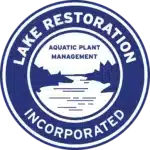Lily Pad Control: Removing Lily Pads from a Pond
Many people refer to the Water Lily, either the native or introduced varieties, as lily pads but that is simply the emergent part of the plant or part of the plant we can see above the water. The entire plant is much more complicated and includes a sophisticated root system which serves as one of its ways of reproduction. This root system is the aspect that should be considered when one decides how to best manage their lily pad control issues.
The water lily has large, round, cleft (cut about halfway to the mid-vein) leaves that are about 6 to 12 inches in diameter. The underside of the leaf is purplish-red and the flower is white with multiple rows of petals. Most exotic or non-native waterlilies usually have brightly colored flowers in either pink, purple, or red. Some exotics also have white or yellow flowers and can be difficult to distinguish from native species. Non-native varieties are classified in most states, including Minnesota, as a “regulated exotic species” making them legal to purchase and own, but illegal to put anywhere that a person cannot control the plant and its growth.
As with many invasive aquatic weeds, destroying the root system is the best way to eliminate a plant that has taken over part or a complete body of water. Unfortunately mechanical removal is often not the answer as any root system fragments left behind can re-grow into an entirely new plant within a growing season or two. Also, cutting the plants back at the wrong time of year can lead to stimulated growth causing an even bigger plant problem.
Lake Restoration recommends the use of their open water kit for lily pad control and removing lily pads from ponds and lakes. The herbicide travels from the visible and reachable leaf, or lily pad, all the way to the root system. This is the best and also the easiest and least labor intensive option. There is no need for the back-breaking effort that can come with physical or mechanical removal.
If you have any questions about identifying what may be a native or invasive water lily problem or wonder how to get your plant problem under control, please contact us at Lake Restoration, we’re happy to help.
